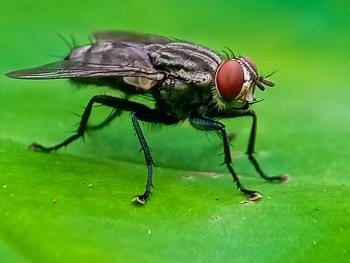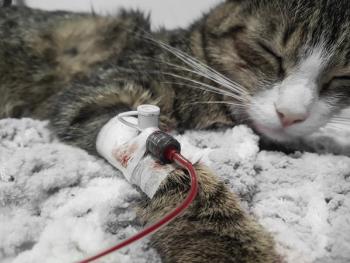
Study Confirms Efficacy of 12-week Flea and Tick Preventive
A new study confirms the efficacy of Bravecto in providing 12 weeks of protection against flea infestations in both cats and dogs.
Prevention through the regular administration of oral or topical medications has long been touted as the most effective way to protect companion animals from parasitic infections. Unfortunately, compliance is an ongoing hurdle to the success of preventive measures—especially because veterinarians recommend year-round medications to best protect pets from the most common parasites: fleas and ticks.
Currently, the vast majority of available preventive products require a 4-week dosing interval. However, numerous studies confirm that monthly dosing is associated with poor client compliance and leaves cat and dogs susceptible to infection and disease progression.
A member of the isoxazoline class, fluralaner (Bravecto, Merck Animal Health) is a novel drug that has been proven to provide 12 weeks of flea and tick control for both dogs and cats.
RELATED:
- The Benefits of Longer-Lasting Flea and Tick Prevention
- The Educated Client: Fleas and Your Pet
Available through prescription only, fluralaner is indicated for the treatment and prevention of infestations with the cat flea (Ctenocephalides felis), black-legged tick (Ixodes scapularis), American dog tick (Dermacentor variabilis), and brown dog tick (Rhipicephalus sanguineus). Fluralaner also provides 8 weeks of prevention against lone star tick (Amblyomma americanum) infestations.
As outlined recently in Parasites & Vectors, 2 assessor-blinded studies—1 in dogs and 1 in cats—evaluated the sustained efficacy of topical fluralaner against flea infestations in a simulated home environment (SHE).
Methodology
All animals used for the study were housed individually and maintained indoors in a SHE capable of supporting the flea life cycle. Each pen or cage contained carpeting as bedding, and flea media were applied to the carpet at the time animals were placed in each pen or cage to encourage the development of nonparasitic life cycle stages. The media were also applied weekly for the remainder of the study.
For the canine study, 28 healthy intact male and female beagles—older than 6 months and ranging in weight from 8.1 to 13.1 kg—were screened, bathed on day —70 using a nonmedicated shampoo, and placed in pens for acclimation. On day –56, the 24 dogs with the highest flea counts from an infestation on day –64 were placed in individual study pens. The 4 dogs with the lowest flea counts were designated as alternates to provide replacement dogs should an allocated dog require removal prior to treatment.
For the cat study, 26 domestic shorthair and domestic longhair male (intact) and female (intact and spayed, nonpregnant and nonlactating) cats—older than 14 weeks and weighing 2.2 to 5.6 kg—were assigned on day —42 to individual cages for acclimation. All of the cats were bathed on day –39 using a nonmedicated shampoo, infested with fleas on day –36, combed approximately 24 hours later and counts conducted. On day –28, the 20 cats with the highest day –35 flea counts were placed in their individual SHE cages.
On day 0, topical fluralaner was applied in a single spot in volumes ranging from 0.7 to 1.2 mL per dog and 0.3 to 0.8 mL per cat, representing the minimum clinical dose of 25 mg/kg for dogs and 40 mg/kg for cats. Each animal was kept on the treatment table for about 5 minutes following administration and monitored for any potential abnormal occurrences before being returned to its simulated environment.
Results
On all posttreatment count days, at least 8 control dogs had 1 or more live fleas, and all control dogs remained infested at each assessment from day 28 through day 84. In the fluralaner-treated group, 2 fleas were found on 1 dog the day after treatment, and 3 fleas were found on another dog 14 days after treatment. No fleas were found on any fluralaner-treated dog at any other posttreatment assessment.
The cat study produced similar results. In the control group, at least 6 control cats had 2 or more live fleas except for days 7 and 14, and all 9 control cats were infested from day 28 through the final assessment on day 84. Flea control efficacy of fluralaner was 100% on all days other than day 1, when it was 96.1%.
No adverse effects were seen in any of the treated dogs or cats in this study. Additionally, there were no treatment site problems and no evidence of either runoff or dripoff from the treated animals.
Conclusion
A single application of a topical formulation of fluralaner at the minimum clinical dose was highly effective for controlling flea infestations on dogs and cats in a SHE for 12 weeks following treatment. Under SHE conditions, the rapid onset of the protective effect of topical fluralaner against flea infestations on both dogs and cats was confirmed. The efficacy found in these studies confirms reports of fluralaner efficacy in dogs and cats.
Newsletter
From exam room tips to practice management insights, get trusted veterinary news delivered straight to your inbox—subscribe to dvm360.




